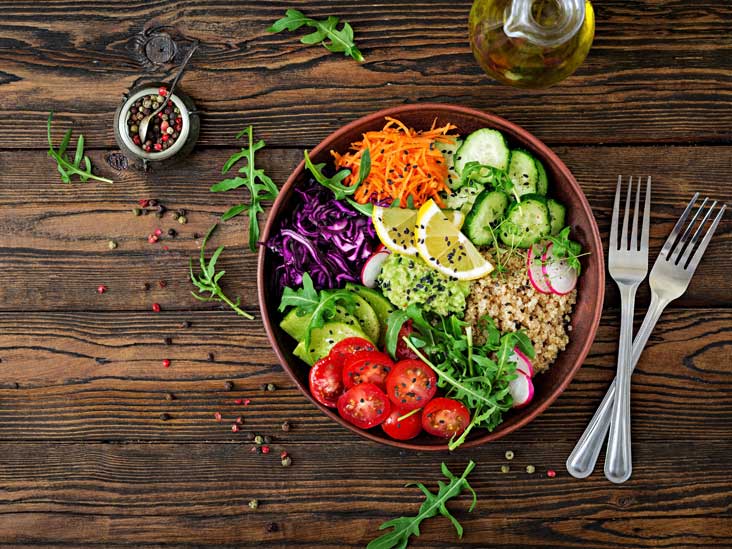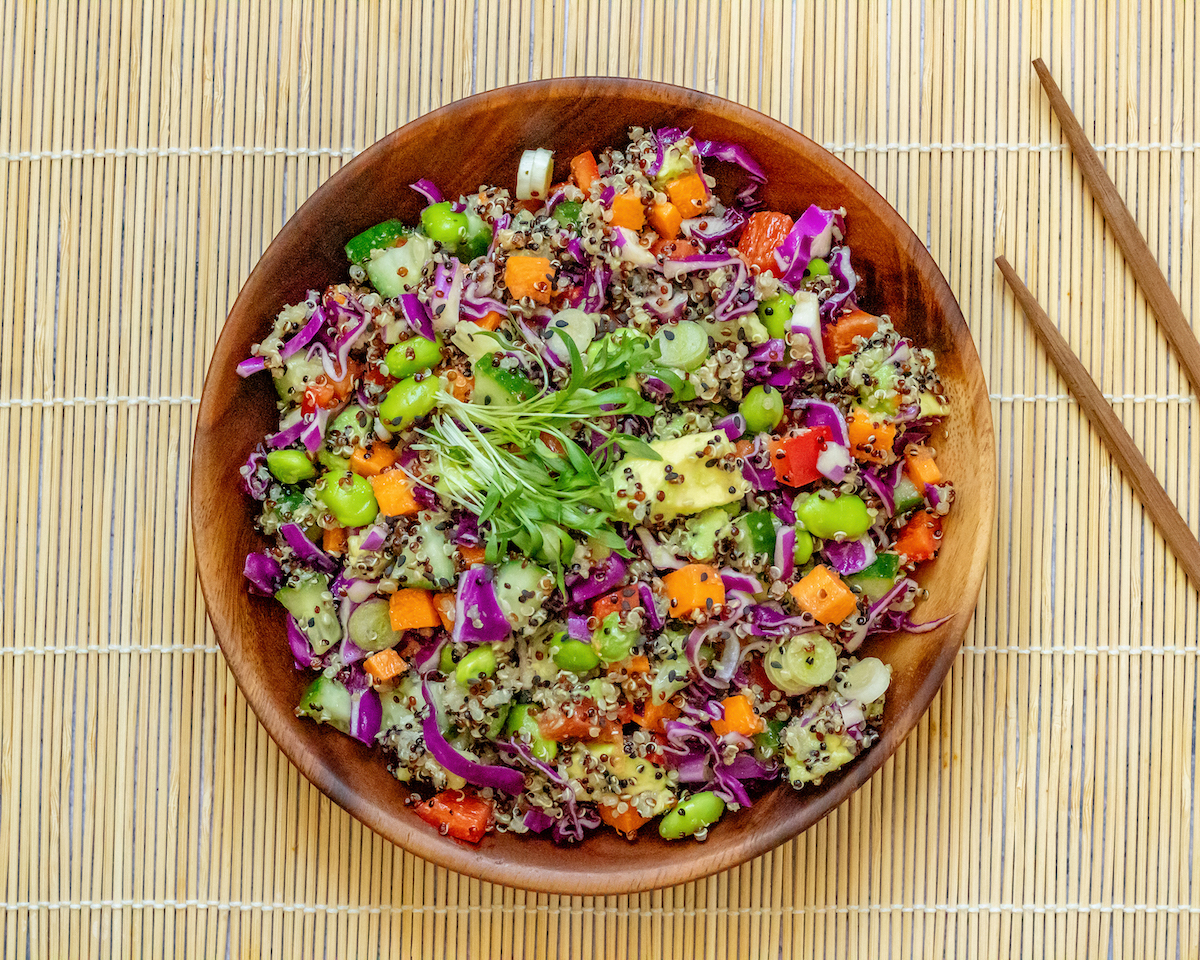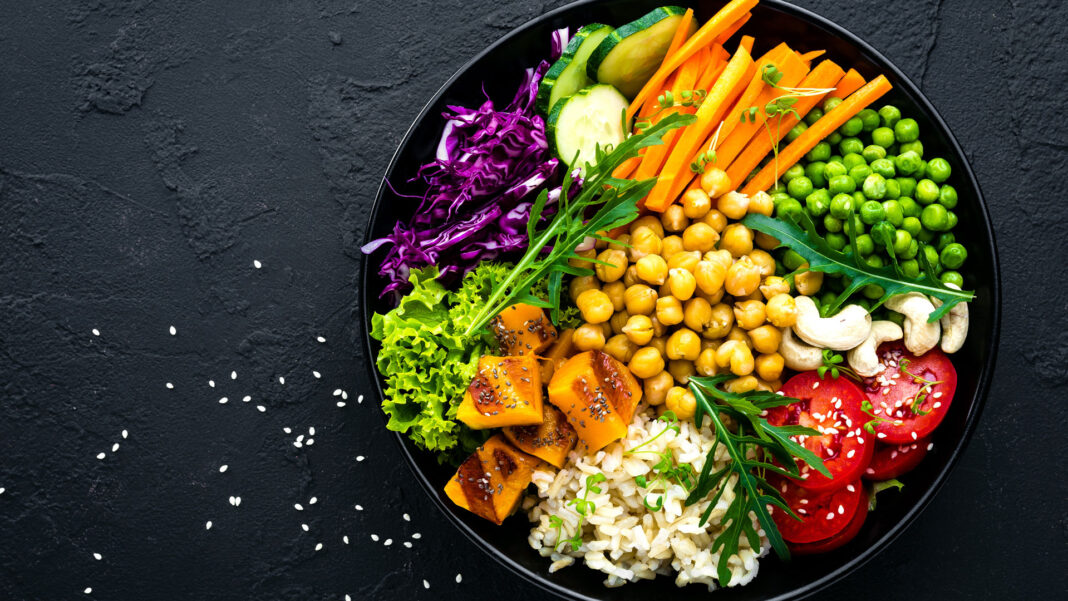Ever hear a dietician advise someone to “eat the rainbow”? Even though this is standard medical advice, many people are still unaware of what eating the rainbow implies. Learn why eating a rainbow of foods is a good idea and what constitutes a great rainbow diet by reading on.
Read More: How this breathing technique might help you get quick and better sleep.
A Rainbow Diet: What Is It?
Dr. DeAnna Minich invented the phrase “rainbow diet” after discovering that various food colours support the health of the adrenals, digestive system, heart, thyroid, reproductive glands, pituitary gland, and pineal gland, among other seven systems of the body. She discovered that each food item of a certain colour nourished the body of that colour.
Similar to how there are seven colours in the rainbow, there are seven different types of food. Plants get their distinctive colour from pigments or phytonutrients. Additionally, these pigments are in charge of giving each meal its own nutrients and health advantages. In order to guarantee that the body receives enough nutrition for all systems and overall health, it is a good idea to follow the rainbow diet chart.

The Advantages of Eating a Rainbow
Eating the rainbow simply refers to including a range of vibrant fruits and vegetables in your daily diet.
Here is how consuming the various coloured pigments benefits the body:
- Enhances cardiovascular health Lowers chance of stroke.
- Eliminates cancer.
- Increases mental function, boosts immunity, and reduces inflammation in the body.
- Slows the deterioration brought on by ageing.
- Makes eyes healthier.
- Encourages healthy skin and hair.
- Lowers blood pressure and cholesterol.
- What Does the Rainbow Diet’s Variety of Colours Bring to Your Plate?.
- Your body absorbs a variety of nutrients, minerals, and phytochemicals that are beneficial to it when you include a wide variety of foods in your diet.
What each shade has to give is as follows:
1. Red
What features are shared by foods like tomatoes, carrots, cherries, strawberries, red onions, and red bell peppers? Their striking crimson hue! They are pigmented with betalains, anthocyanins, ellagic acid, lycopene, and give off a vivid red hue. These pigments contain potent anti-inflammatory and antioxidant qualities that promote heart health, fight ageing, and lower the risk of various cancer kinds. These foods have a very high vitamin A content.
2. Yellow and Orange
Carotenoids and flavonoids, which are vital for bettering skin and eye health, are what give fruits and vegetables their orange and yellow hues. They minimise organ inflammation and counteract the damaging effects of free radicals thanks to their anti-inflammatory and antioxidant characteristics. They enhance immunological function, strengthen the heart, and lower the risk of various malignancies. These foods have a very high concentration of vitamin C, an antioxidant and nutrient. Orange, mango, papaya, sweet corn, banana, etc. are good examples of foods to include in the rainbow diet as sources of orange and yellow foods.
3. Green
High concentrations of isoflavones, isothiocyanates, and chlorophyll may be found in green fruits and vegetables. By enhancing detoxification, these naturally occurring compounds in cruciferous vegetables lessen the action of carcinogens. These foods are abundant in antioxidants with strong anti-inflammatory qualities, vitamin K, potassium, fibre, and folic acid. Green apples, kiwi fruit, cucumber, broccoli, kale, and cabbage are a few examples of good supplies.

4. Purple and Blue
Anthocyanins and resveratrol are abundant in foods that are blue and purple. These compounds offer strong anti-cancer and anti-aging capabilities, according to research. Furthermore, the damage brought on by oxidative stress and inflammation is actively repaired by these bioactive phytochemicals. They also aid in enhancing cognitive function and regulating blood pressure. Blackberries, blueberries, eggplant, purple cauliflower, prunes, etc. are some good sources.
5. White and Brown
Foods that are brown or white lack colour because they lack pigment. However, they are rich in allicin and flavonoids, which are recognised for having anti-cancer qualities. Additionally, these meals assist in lowering blood pressure, cholesterol, and the risk of stomach cancer. These foods have strong anti-microbial qualities that strengthen the immune system. For healthy bones, they are essential. Onions, mushrooms, leeks, cauliflower, and garlic are among the essential foods.
The foods a rainbow diet should exclude:
Eating a rainbow means consuming a variety of meals to maximise the health and nutritional value of plant-based diets. As a result, several items are excluded from the rainbow diet. Which are:
- packaged food
- canned meals with additional sugar or salt
- synthetic colours
- alcoholic beverages
- Energy drinks and mocktails
- added sugar and salt








